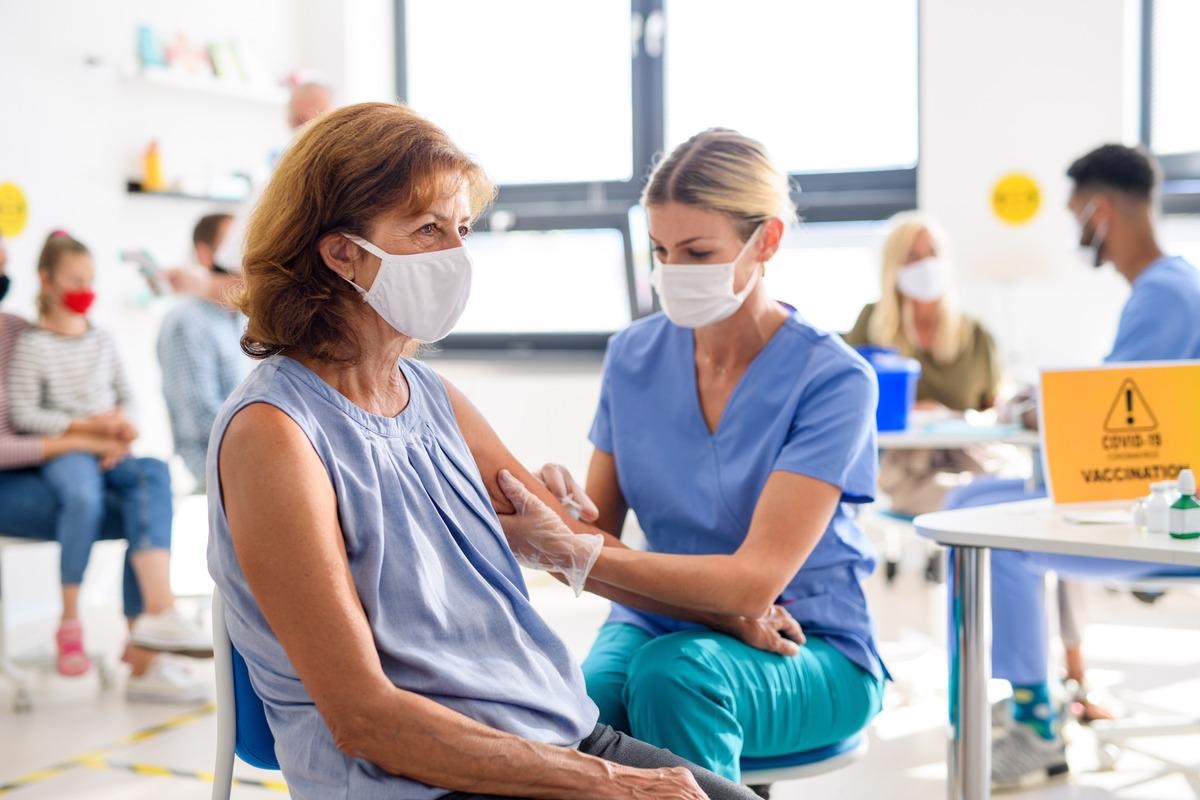The continued evolution and emergence of severe acute respiratory syndrome coronavirus 2 (SARS-CoV-2) variants raises concerns regarding the efficacy of monoclonal antibodies (mAbs) therapeutics and vaccines, providing problems for global pandemic management. The World Health Organization (WHO) classified these variants as Variant of Interest (VOI) or Variant of Concern (VOC).
 Study: A subset of Memory B-derived antibody repertoire from 3-dose vaccinees is ultrapotent against diverse and highly transmissible SARS-CoV-2 variants, including Omicron. Image Credit: Halfpoint/Shutterstock
Study: A subset of Memory B-derived antibody repertoire from 3-dose vaccinees is ultrapotent against diverse and highly transmissible SARS-CoV-2 variants, including Omicron. Image Credit: Halfpoint/Shutterstock
The newly discovered Omicron variant (B.1.1.529), which has been declared as a new VOC, has resulted in an exceptional increase in COVID-19 cases in South Africa, which is now spreading all over the world. Surprisingly, Omicron is the most severely altered version to date, with more than thirty mutations in the spike (S) protein, fifteen of which are in the receptor-binding region (RBD).
In addition, the S1 subunit's N-terminal domain (NTD) contains three minor deletions and one three-residue insertion. Many substitutions, such as G142D/Δ143-145, ins214EPE, 79 K417N, T478K, E484A, Q493K, and N501Y, are closely related to neutralizing antibody resistance and vaccine-induced humoral immunity, while others, such as Δ69-70 in Alpha, N501Y in Alpha, Beta, and Gamma, and P681H in Alpha and Delta, are presumably associated with enhanced transmissibility.
Despite the fact that COVID-19 vaccines were still effective against severe diseases and deaths, even those caused by the circulating Delta variant, fading immunity and major breakthrough infections due to viral diversity necessitate a third dosage or new vaccines. The US Food and Drug Administration has approved the use of a third booster dosage for all individuals after completion of primary vaccination with the licensed COVID-19 vaccine to prevent the current recurrence of the pandemic.
A preprint version of this study, which is yet to undergo peer review, is available on the bioRxiv* server.
The study
Using prefusion SARS-CoV-2 S as a bait, the authors sorted immunoglobulin (IgG+) memory B cells from four three-dose CoronaVac vaccinees' peripheral blood mononuclear cells (PBMCs). The researchers sorted 1800 SARS-CoV-2 S memory B cells, acquired 422 matched heavy- and light-chain antibody sequences, and chose 323 antibodies for production. ELISA analysis revealed that 163, 100, and 51 antibodies identified the RBD, NTD, and S2, respectively, while 9 antibodies failed to bind S. BLI tests revealed that virtually all RBD-directed antibodies bound to WT SARS-CoV-2 at sub nM levels, and 127 of them had neutralization activity against both legitimate and pseudotyped WT SARS-CoV-2, indicating that they should be investigated further. Over 93% of these antibodies had broad binding capabilities to the majority of VOCs and VOIs. The Omicron RBD was cross-reacted by 85% of these antibodies, 80% of NTD antibodies, on the other hand, lost their Omicron associations. Due to the increased diversity of the NTD, antibodies to the other four VOCs showed relatively limited cross-reactivity.
The results of pseudovirus neutralization experiments using WT or various VOCs revealed that XX RBD targeting antibodies were very effective, with half-maximal inhibitory concentrations (IC50) ranging from 0.002 145 to 0.800 ng/l against wild type (WT) and other VOCs. Twenty-eight antibodies neutralize viral infection by directly inhibiting interactions between the RBD and its receptor human angiotensin-converting enzyme 2 (hACE2), while 3 antibodies neutralize viral infection through other methods. Omicron was neutralized by a subset of RBD antibodies (13 and 24), with IC50s of 0.02 and 0.1 ng/l, respectively.
These neutralizations are comparable to those seen with best-in-class anti-WT antibodies. For well-studied therapeutic antibodies like S309 and DXP-604, the authors achieved IC50 values of 0.24 and 0.28 152 ng/l, respectively. These results are a staggering 1040 times greater than the subset antibodies. Some antibody medicines, such as REGN10933, REGN10987, LY155 CoV555, LY-CoV016, AZD1061 and AZD8895, have almost completely lost their anti-Omicron activity.
Meanwhile, unique VOC-resistant antibodies with significant neutralizing potency against WT and some other VOCs have been found, accounting for around 30% of the antibody repertoire, indicating the evolution of a diverse antibody repertoire following three-dose vaccination. Experiments utilizing real virus, including WT and all five VOCs, revealed that all of these antibodies had identical neutralization patterns, confirming the neutralizing power and breadth of this subset of antibody repertoire produced by three-dose vaccination.
Implications
The presence of a subset of antibodies with broad neutralizing activities against all circulating VOCs in the three-dose vaccines' memory B-derived antibody repertoire suggests that the Omicron/future variants infection may elicit selective and rapid recall of humoral responses, conferring secondary protection directed by memory etched in the immune system. More research is needed to determine the benefits and drawbacks of booster injections of an Omicron-specific vaccine vs just administering a booster shot with the original immunizations. Finally, identifying and characterizing broadly protective antibodies against all circulating VOCs will aid in the development of universal sarbecovirus immunization regimens.
*Important notice
bioRxiv publishes preliminary scientific reports that are not peer-reviewed and, therefore, should not be regarded as conclusive, guide clinical practice/health-related behavior, or treated as established information.
- Kang Wang, et al. (2021). A subset of Memory B-derived antibody repertoire from 3-dose vaccinees is ultrapotent against diverse and highly transmissible SARS-CoV-2 variants, including Omicron. bioRxiv. doi: https://doi.org/10.1101/2021.12.24.474084 https://www.biorxiv.org/content/10.1101/2021.12.24.474084v1
Posted in: Medical Research News | Disease/Infection News | Healthcare News
Tags: Angiotensin, Angiotensin-Converting Enzyme 2, Antibodies, Antibody, Blood, Coronavirus, Coronavirus Disease COVID-19, Efficacy, Enzyme, Evolution, Food, Immune System, immunity, Immunization, Immunoglobulin, Pandemic, Protein, Pseudovirus, Receptor, Research, Respiratory, SARS, SARS-CoV-2, Severe Acute Respiratory, Severe Acute Respiratory Syndrome, Syndrome, Therapeutics, Vaccine, Virus
.jpg)
Written by
Colin Lightfoot
Colin graduated from the University of Chester with a B.Sc. in Biomedical Science in 2020. Since completing his undergraduate degree, he worked for NHS England as an Associate Practitioner, responsible for testing inpatients for COVID-19 on admission.
Source: Read Full Article






